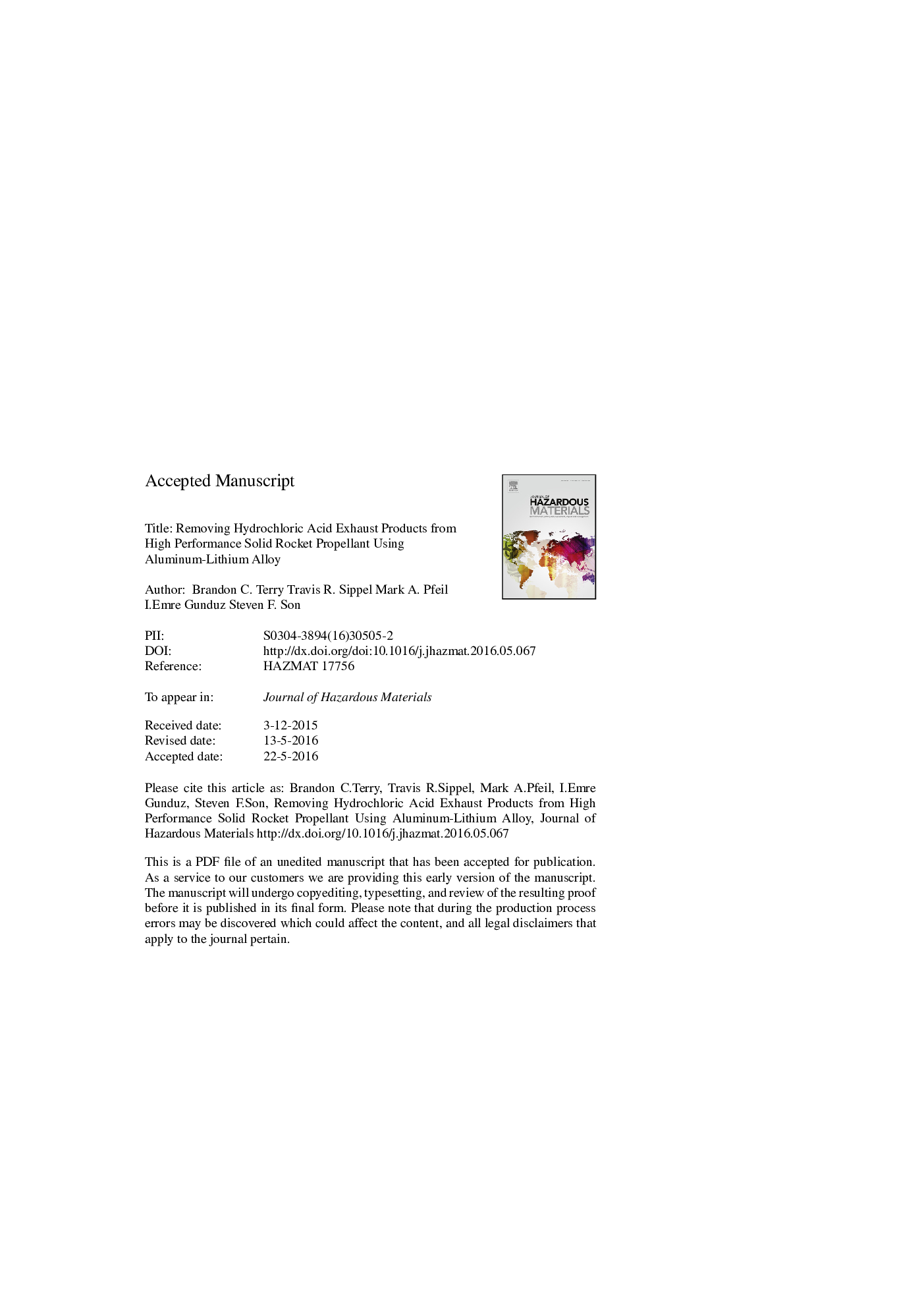| Article ID | Journal | Published Year | Pages | File Type |
|---|---|---|---|---|
| 6970097 | Journal of Hazardous Materials | 2016 | 23 Pages |
Abstract
Hydrochloric acid (HCl) pollution from perchlorate based propellants is well known for both launch site contamination, as well as the possible ozone layer depletion effects. Past efforts in developing environmentally cleaner solid propellants by scavenging the chlorine ion have focused on replacing a portion of the chorine-containing oxidant (i.e., ammonium perchlorate) with an alkali metal nitrate. The alkali metal (e.g., Li or Na) in the nitrate reacts with the chlorine ion to form an alkali metal chloride (i.e., a salt instead of HCl). While this technique can potentially reduce HCl formation, it also results in reduced ideal specific impulse (ISP). Here, we show using thermochemical calculations that using aluminum-lithium (Al-Li) alloy can reduce HCl formation by more than 95% (with lithium contents â¥15 mass%) and increase the ideal ISP by â¼7 s compared to neat aluminum (using 80/20 mass% Al-Li alloy). Two solid propellants were formulated using 80/20 Al-Li alloy or neat aluminum as fuel additives. The halide scavenging effect of Al-Li propellants was verified using wet bomb combustion experiments (75.5 ± 4.8% reduction in pH, â [HCl], when compared to neat aluminum). Additionally, no measurable HCl evolution was detected using differential scanning calorimetry coupled with thermogravimetric analysis, mass spectrometry, and Fourier transform infrared absorption.
Related Topics
Physical Sciences and Engineering
Chemical Engineering
Chemical Health and Safety
Authors
Brandon C. Terry, Travis R. Sippel, Mark A. Pfeil, I.Emre Gunduz, Steven F. Son,
